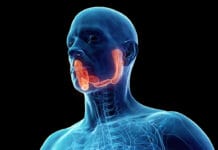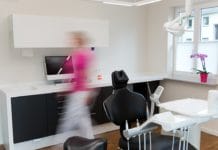We’ve all heard the aphorism, “You can lead a horse to water, but you can’t make it drink.” For dental professionals, the aphorism could be, “You can teach a patient to floss (clean interdentally), but you can’t make him or her do it.” Or perhaps, “You can teach a patient how to brush, but that doesn’t mean he or she will do it correctly.”
We’ve all experienced the scenario where, time and time again, dental patients present with less-than-optimal oral hygiene in spite of our regimented and carefully customized oral hygiene home care instructions. Spending adequate time and energy trying to help patients attain a healthy mouth, sending them home, and thinking, “I did such an outstanding job educating them, scaling their teeth, and relating the oral/systemic relationship that I’m sure they’ve got it this time!” only to be disappointed with another frustrating checkup three, four, or six months later.
A New Plan of Attack
The two common denominators here are you and the patient. If the patient won’t change, perhaps you can. A patient who simply refuses to or is not able to practice recommended home care suggestions may respond to a change in your method of approach. Review your patient notes.
What have your past recommendations been? Was your patient receptive to receiving home care instruction? Has your patient tried any of your recommendations? What has been your patient’s attitude towards your recommendations in the past? By determining what your approach has been in the past, as well as how your patient has received it, helps ascertain what modifications to consider for a new “plan of attack.”
Since dental hygiene school, interdental cleaning has been coached and embedded in our brains. We ardently coach our patients on the methods and practice of proper flossing and interdental cleaning and the reasons behind interdental cleaning. Interdental cleaning (properly) can reduce interproximal bacterial pathogens and debris, stimulate tissue, and bring oxygen under the sulcus ‒ hence reducing gingival inflammation and promoting a healthier mouth. Yet many patients simply avoid this healthy habit for reasons only they can own.
Look at your patient’s hands. Are they simply too big ‒ say, bear-paws? Are they arthritic? Does your patient have some sort of hand tremor? These issues alone are good reasons to change your approach to patients’ home care instructions. Suggest floss picks and demonstrate proper usage, recommend water flossers, interproximal brushes, or even demonstrate sulcular dry brushing (which, when done slowly and methodically, can do quite a nice job of sneaking into those interproximals). Find out what your patient is most likely to be successful with and encourage that.
For the patient with either large, arthritic, or unsteady hands, the simple recommendation of flossing aids such as a vibrating dental flosser, a dental floss holder, or floss picks should be encouraged. Explain how each one is to be properly used for the best oral health benefits. Adding to that, the recommendation of an electric toothbrush for a patient with hand tremors or arthritis enables them to properly navigate the gingival margin by adding dexterity that they perhaps could not achieve with a manual toothbrush.
The Lax Patient
“Laxiness.” Let’s face it, as stated earlier, you can lead a horse to water, but you can’t make it drink. Such is the case of the lax flosser. Instead of laziness, I prefer a play on words to call it “laxiness.” This is the patient who has been instructed on interdental cleaning his or her whole life and quite frankly is sick of hearing about it. You have become an annoyance to this patient. You may think, “Why should I put my all into someone who simply doesn’t care?” The answer is, of course, because we are caregivers. It’s what we do.
With the lax person, asking permission to give oral hygiene instruction is a good lead. If they decline, I think, “Oh good, that saves me some time and energy.” If permission is granted, suggesting a water flosser is a great idea and, with permission, demonstrate dry brushing as mentioned above. Do not fret if no headway is gained, as it may take someone with laxiness an emergency dental issue to get on the home care bandwagon. If they accept flossing or other home care recommendations, out comes the hand mirror for a proper tutorial. Ask if they are interested in any alternative ways to clean between their teeth that might be more doable for them. Let the patient choose their best option for success.
What about the scenario where a patient presents with copious amounts of calculus on their mandibular anterior linguals? They state that they always get build-up there, and we have grown tired of educating otherwise. Introducing dry brushing and a little nutritional counseling may be the change that this patient needed to hear to gain a healthier mouth. Perhaps a high sugar diet is a culprit more than a lack of brushing skills.
Let’s not forget the correlation between ankyloglossia and heavy anterior lingual calculus build-up. The tip of our tongue is designed to help clean our teeth by sweeping them. When the tip is tied down, saliva accumulates, and plaque and debris do not get properly swept. Suggest and explain why and how a lingual frenectomy can be essential to improve oral hygiene. A lingual frenectomy can set that tongue free to help keep cantankerous calculus at bay!
A Verbal Caress for Patients
Words of affirmation. Nobody likes being told what to do, especially if we have actually been trying to do exactly what we are being told to do! Words of affirmation are like a caress, whereas “telling” people what they should do feels more like a poke. Start with a positive and coach your way into kind suggestions instead of demands. “Sandwiching” the conversation is an easy way to be positive while coaching; begin with a positive statement, then explain what needs to be improved upon, and end with a positive statement. For instance, begin by telling the patient that the plaque build-up you saw the last appointment on the posterior lingual molars along the gumline is far less this appointment, so it looks like they have been doing a fantastic job at brushing in that area. Then, point out that they still have inflammation due to not cleaning interdentally, with the why and how. Afterward, reinforce how well they have stepped up their brushing or another positive thing you saw. Build your patient up instead of tearing them down. Coach and encourage, but never force-feed.
Customizing your coaching is the best way to change the way you approach each patient. Individualized care along with quality progress notes allows the practitioner to create and use daily “action research” upon which to learn, build, and grow. Learn your patients’ habits and what motivates them ‒ what works and what does not work. Build upon what you have learned. Grow together as patient and practitioner to become an unstoppable team of health!
So, you see, our changes are as important as our patient’s changes for progress to happen. When progress does not happen, do not take it personally. Plant the seeds of change and water them, but perhaps change your fertilizer (method of approach) as needed for continued growth and health.












